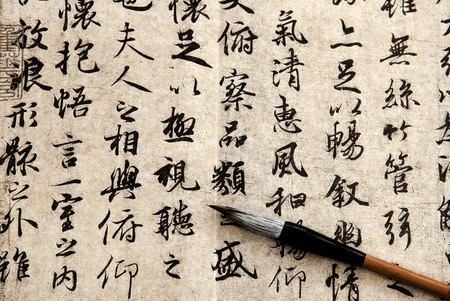The creation of handwriting was believed to have formed 35,000 – 40,000 years ago in Mesopotamia. In a writing system known as cuneiform, they used pictographs and ideographs to communicate various ideas and records. Although many of these writing practices no longer exist, it has helped create the foundation of the languages in our world today, including the modern-day Chinese characters in the Chinese language.

A Historical look at Chinese Handwriting
When looking back on the evolution of Chinese writing, little is known about its origin. However, the first inscriptions of characters were discovered mainly on oracle bones and shells that are believed to have been from the Shang dynasty (1675 – 1029 B.C.). These scripts on these artifacts closely resemble present-day Chinese characters, indicating that these systems were already well established back then. Due to this, it is believed that earlier prototypes have yet to be uncovered or are destroyed. At the time, these writing systems were primarily used by people of a higher power, often by aristocrats or governors. It wasn’t until the aristocrats lost their rule during the Warring States period (475 – 221 BC.) when writing became accessible to the lower classes. During this period, various scripts began forming in different states, and these scripts soon became unified under the rule of emperor Qin Shi Huang when the Warring states merged. Through this organization of the many languages, Huang formed a writing system known as xiaozhuan (小篆) or small seal script primarily used for stone inscriptions and traditional engravings. For the first time in history, Huang bonded together the diverse groups in China using this universal writing system, and he became the first monarch to do so. Soon after its creation, xiaozhuan (小篆) evolved into lishu (隸書) or clerical script, that was now used by official clerks and was popularized through the writing on bamboo strips. These writing systems only continued to spread after this, eventually leading to writing on silk and paper and a progression in the standard script known as kaishu (正楷). This script proceeded to simplify until it formed the writings in modern Chinese today.

Chinese and its Influence on Kanji and Sino-Korean
While the Chinese were forming their set of handwriting, it also influenced the writing systems in Korea and Japan. The formation of the Japanese script, kanji, could have resulted from trade and transmission between China and Japan. Due to the close geographic proximity between these two countries, Korea was used as a primary cultural transmission location in the 4th century. As a result, many Chinese cultures and items, including religion, engraved objects and calendars, were transferred over to Japan, which introduced the Japanese to the Chinese script. Subsequently, this led the Japanese to take inspiration and borrow several Chinese characters to form kanji.
On the other hand, Korean characters appear to have little to no influence from the Chinese writing systems, with many of its writings being purely original. Despite this, there are several words in modern Sino-Korean that seem to have been borrowed from Chinese. Like kanji, these characters were likely transferred over from trade between China and Japan as Korea was a central trade hub among the two countries. There is also the possibility these scripts were adopted in the 4th century when the country was under the influence of China.

Looking at it as a whole, the Chinese language and its writing systems have come a long way in becoming what it is today while also influencing the writing of other countries. Although pictographs and ideographs are no longer used as a universal writing system, it is astonishing to see their role and evolution in forming the many modern languages that exist today.
Sources:
“Chinese Writing.” Encyclopædia Britannica, Encyclopædia Britannica, Inc., https://www.britannica.com/topic/Chinese-writing.
Chinese, Japanese, and Korean Writing Systems … – Springer. https://link.springer.com/chapter/10.1007/978-3-030-55152-0_5.

Leave a Reply